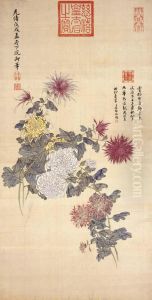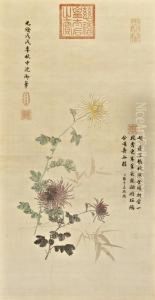Dowager Empress Cixi Paintings
Dowager Empress Cixi, born on November 29, 1835, was one of the most formidable and controversial figures in the Qing Dynasty's history, effectively controlling the Chinese government for nearly half a century from behind the scenes. Her birth name was Yehenara, and she entered the imperial court as a concubine to the Xianfeng Emperor at a young age. Cixi's rise to power began after the emperor's death in 1861, when her five-year-old son, the Tongzhi Emperor, ascended to the throne, positioning her as the Empress Dowager.
Cixi's tenure as a ruler was marked by both progressive reforms and conservative backlashes. Initially, she was a regent for her son, and after his early death, she installed her nephew, the Guangxu Emperor, thus continuing her regency. During her reign, Cixi was a key figure in the Self-Strengthening Movement, which aimed to modernize China's military and industry to resist Western and Japanese imperialism. However, her rule was also characterized by resistance to political reforms that would limit her power and the power of the Qing dynasty.
The Empress Dowager's later years were marred by the disastrous Boxer Rebellion (1899-1901), a violent anti-foreign, anti-Christian movement, which she initially supported. The rebellion's failure led to foreign powers imposing the Boxer Protocol on China, severely undermining Qing sovereignty and further weakening the dynasty. Despite these challenges, Cixi attempted to implement reforms in the empire's final years, including the establishment of a constitutional monarchy, educational reforms, and the abolition of the imperial examination system.
Dowager Empress Cixi died on November 15, 1908, just one day after the death of the Guangxu Emperor, marking the end of an era for China. Her legacy is complex; she is credited with extending the lifespan of the Qing Dynasty while also criticized for her role in its ultimate downfall. Cixi's life and reign have been the subject of much historical debate, seen by some as a period of missed opportunities for reform and modernization that could have transformed China without the upheavals that followed her death.






